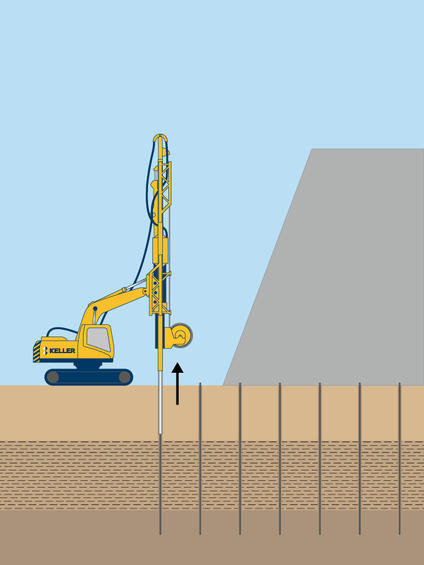Prefabricated Vertical Drains, also known as Wick Drains or band drains are prefabricated geotextile filter-wrapped plastic strips with moulded channels. These act as drainage paths to take pore water out of soft compressible soils that consolidate faster under a constant surcharge load.

Common uses
Process
Wick drains or PVDs consist of a prefabricated strip which is ideal for water transportation. The flexible core is typically manufactured of polypropylene and both sides have grooves allowing water to flow unimpeded. The core is wrapped in a strong and durable geotextile filter fabric with excellent filtration properties, allowing free access of pore water into the drain. This also prevents piping of fines from adjacent soils without clogging.
The drain is fed down through a hollow mandrel mounted on an excavator or crane mast, connected at the bottom to an expendable anchor plate. A vibratory hammer or static method is used to insert the mandrel to design depth. It’s then removed, leaving the wick drain in place. The wick drain is then cut at the ground surface, a new anchor plate connected to it, and the mandrel moved to the next location. A pattern of installed vertical wick drains provides short drainage paths for pore water, which accelerates the consolidation process and the construction schedule.
Advantages
Quality assurance
Keller is highly experienced in the design and construction of this technique particularly in the Middle East where we have designed and installed 110,000 KM of vertical drains in our last project alone. That would run 2.7 times around the world!
We can ensure quality through:
- Automated data acquisition to record all installation parameters
- Trial area monitoring to prove design assumptions
- Surcharge monitoring